1) The document discusses the enforceability of an allotment letter as a binding contract between a developer and buyer for a property.
2) It notes that an allotment letter contains the essential elements of a valid contract and a buyer can seek specific performance if deprived of what was promised in the allotment letter.
3) The case details a property dispute where the buyer made substantial payments as per the allotment letter and payment plan, but the developer later demanded additional amounts including interest without providing details of amounts or interest calculation.



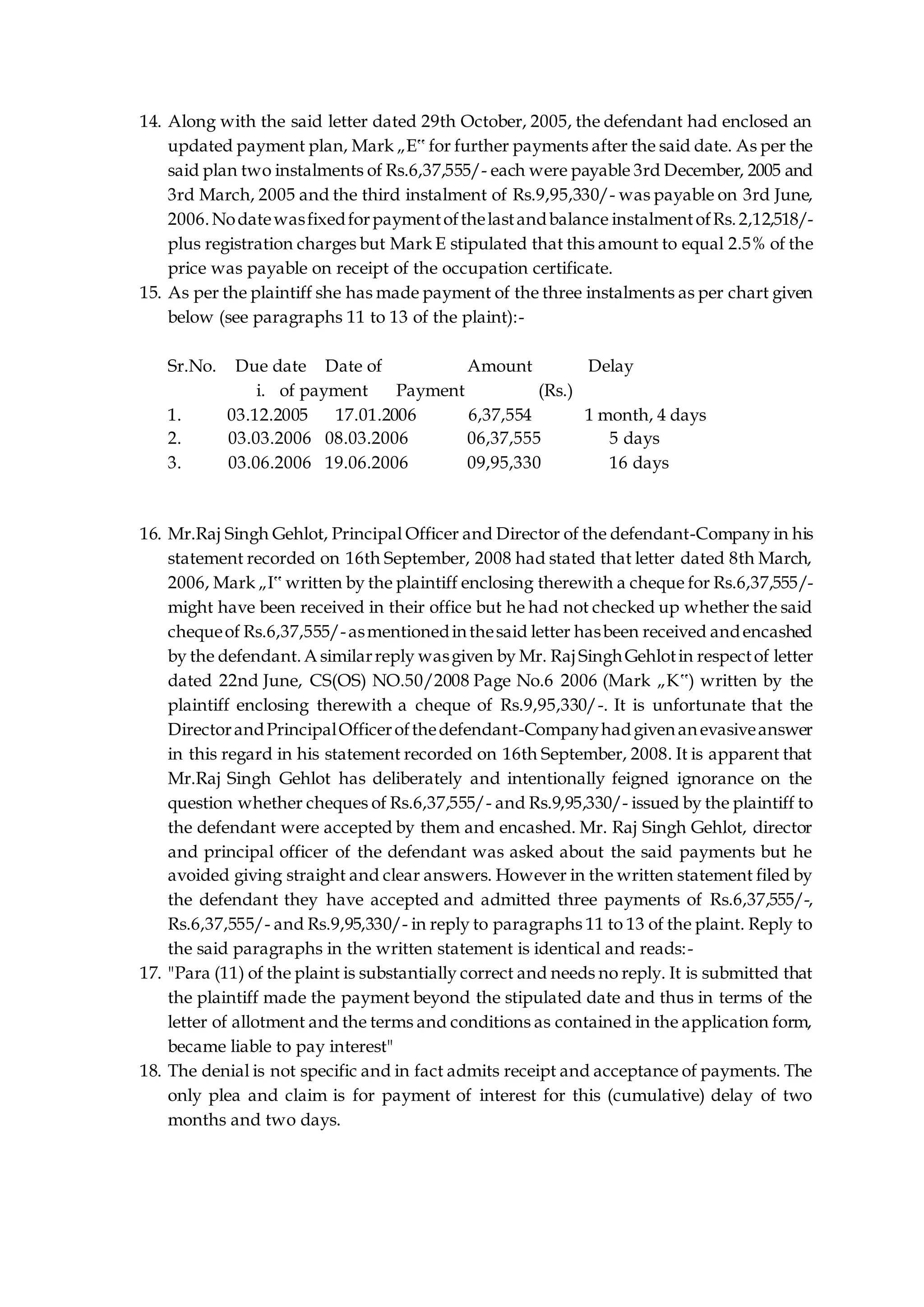

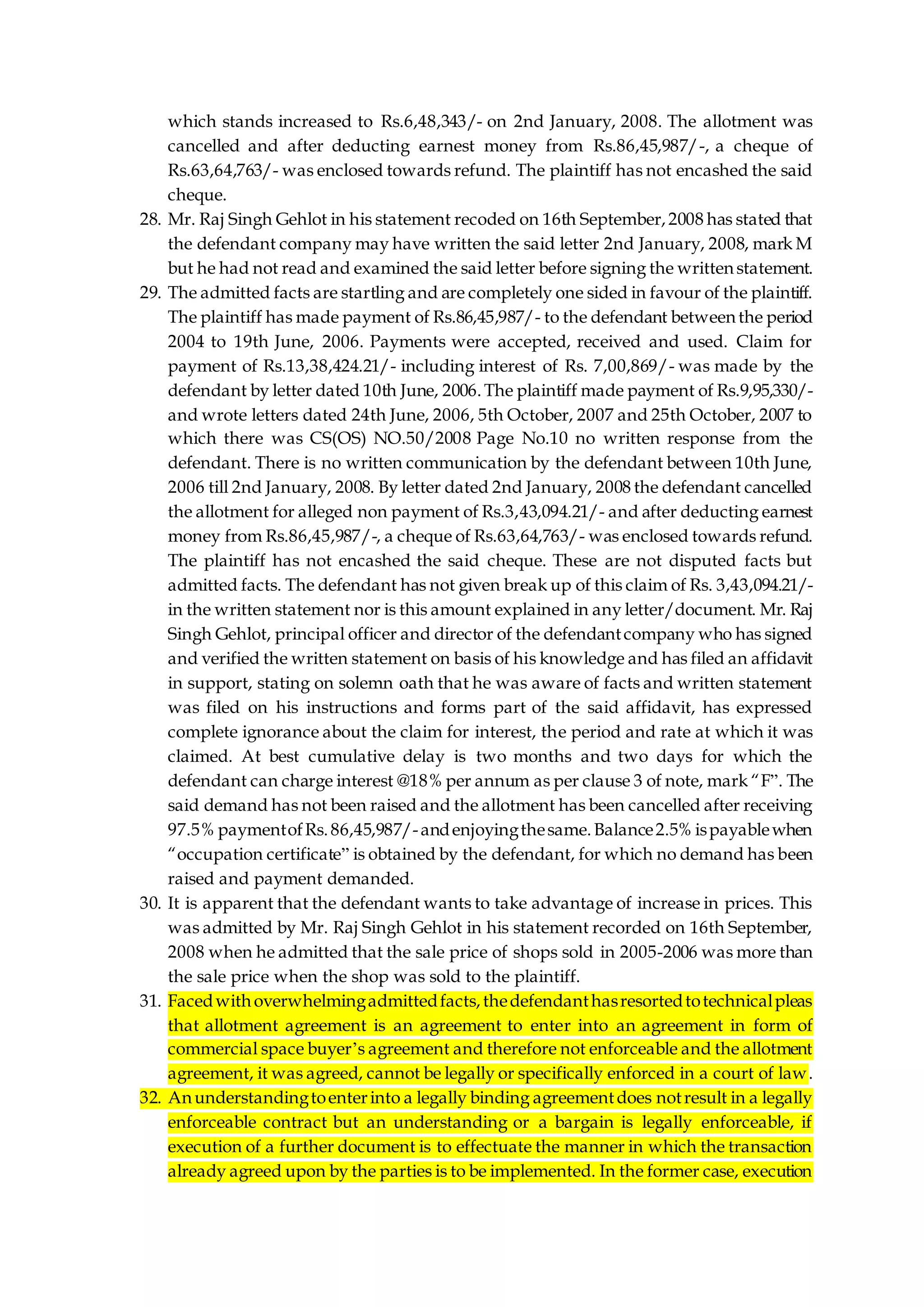
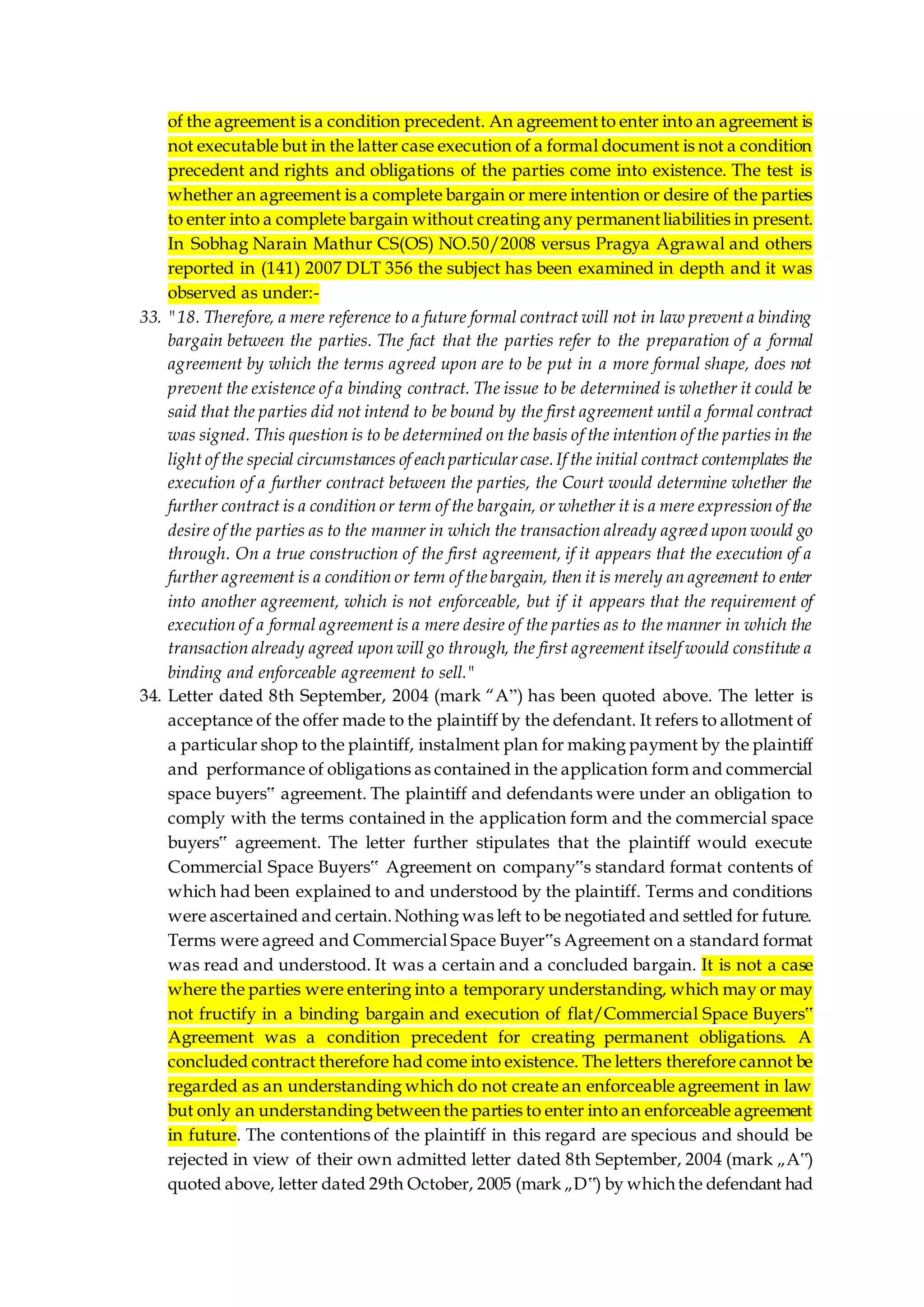


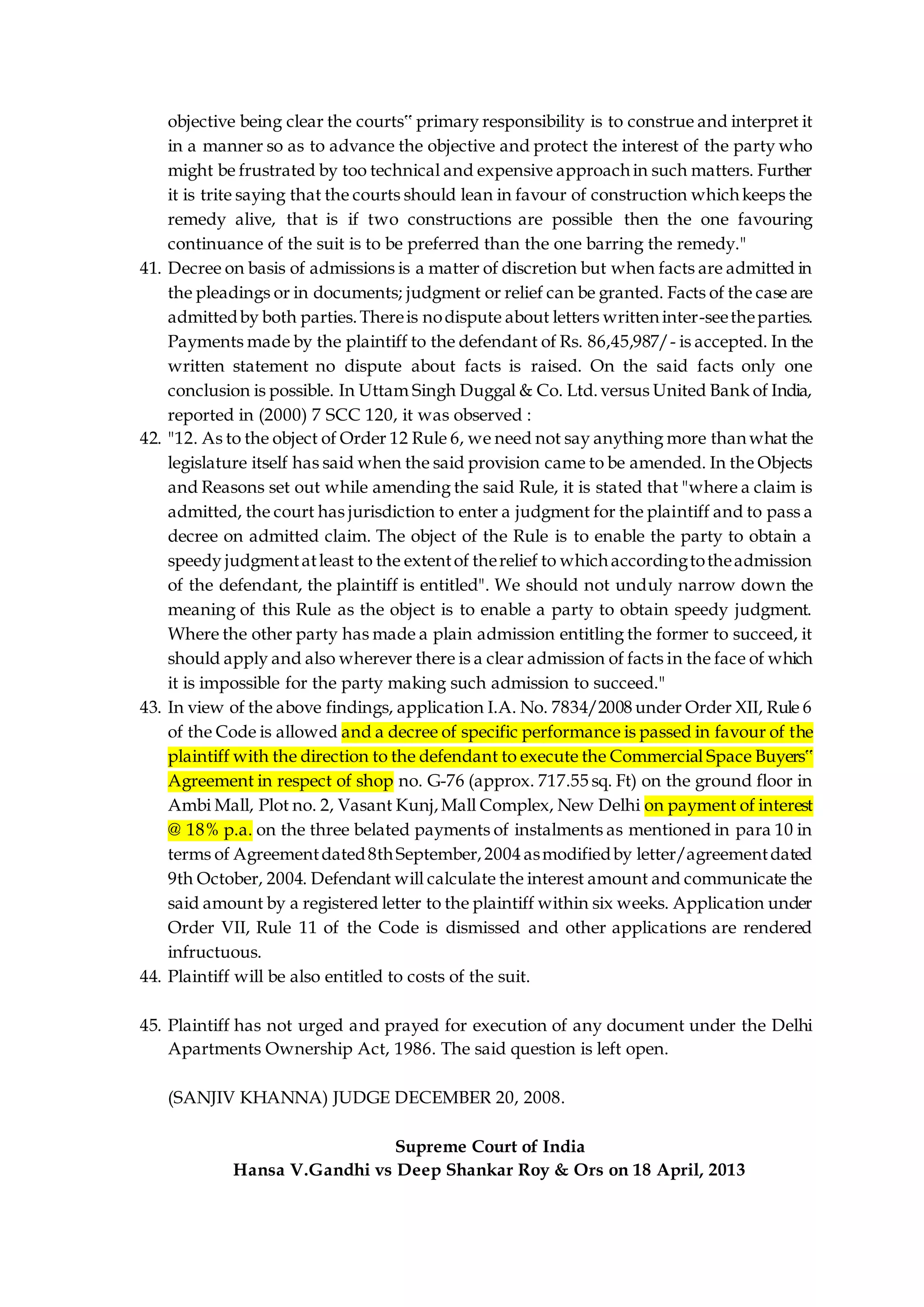
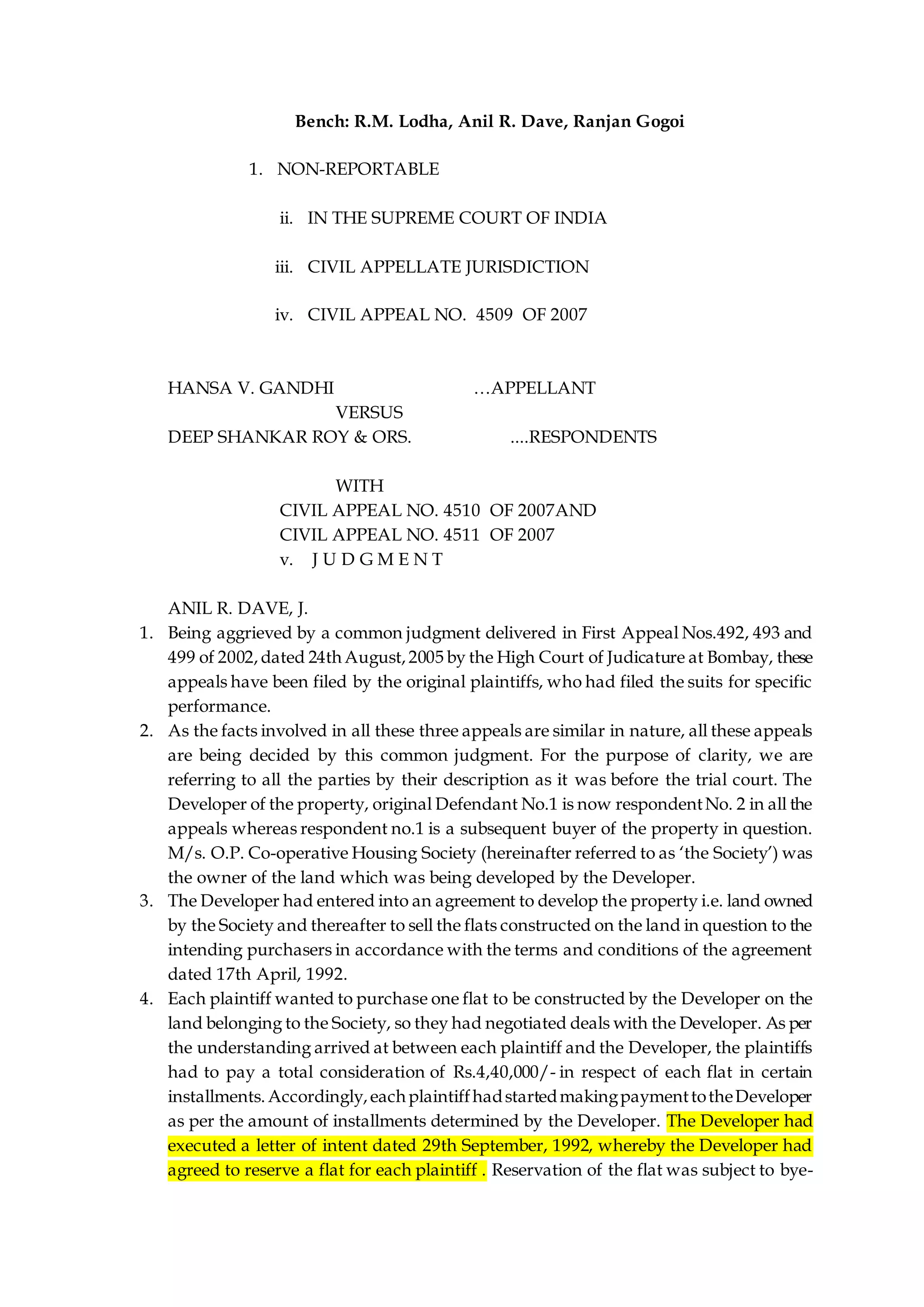


![termination of the agreement was sent by the Developer to the plaintiffs till the date
of payment of the said amount.
13. The learned counsel appearing for the appellants i.e. the original plaintiffs mainly
submitted that the Subsequent Buyers were not bonafide purchasers without notice
because they did not make sufficient enquiry with regard to the earlier transactions
which had been entered into by the Developer with the plaintiffs. According to the
learned counsel, had the Subsequent Buyers made detailed enquiry with regard to the
records of the Developer, they would have surely ascertained the facts with regard to
the letters of intent sent to the plaintiffs by the Developer but by not doing so, the
Subsequent Buyers had shown gross negligence and therefore, it cannot be said that
the Subsequent Buyers were bonafide purchasers without any notice with regard to
earlier transactions entered into between the Developer and the plaintiffs. The counsel
further submitted that the burden of establishing the bonafides of the Subsequent
Buyers was on them and the said burden had not been discharged by them and
therefore, the High Court was in error while observing that the Subsequent Buyers
were bonafide purchasers without any notice.
14. It was also submitted by the learned counsel that the Subsequent Buyers had not
adduced any evidence with regard to payment of purchase price to the Developer and
therefore, it could not have been said that the Subsequent Buyers were buyers in good
faith for valuable consideration.
15. On the other hand, it had been submitted on behalf of the Subsequent Buyers i.e.
respondent no. 1 in each appeal that the plaintiffs never averred in their respective
plaints that the Subsequent Buyers were not bonafide purchasers having no notice
with regard to the earlier transactions. In absence of such pleadings before the trial
court, the plaintiffs could not have advanced any argument with regard to bonafides
of the Subsequent Buyers. To substantiate the aforestated submission, the learned
counselhadrelied upona judgmentdelivered in thecaseof RamSwarupGupta (dead)
through LRs. Vs. Bishun Narain Inter College and Ors. [(1987)2 SCC 555] to the effect
that in absence of pleadings, the court would not deal with the matter not pleaded or
the concerned party would not be permitted to make out a case beyond its pleadings.
Some other judgments were also cited to substantiate the aforestated submissions.
16. It was mainly submitted by the learned counsel appearing for the Subsequent Buyers
thatinabsenceof anyregistrationof theagreement,enteredinto betweentheplaintiffs
and the Developer, the Subsequent Buyers could not have got any opportunity to find
out existence of the letter of intent or an agreement, if any, entered into between the
plaintiffs and the Developer. According to the learned counsel, registration of a
document is a notice to all concerned persons and in absence of registration of the so
called agreement, it cannot be presumed that the Subsequent Buyers had any
knowledge with regard to the earlier transactions. The burden of proof would be on
the plaintiffs to establish that the Subsequent Buyers had knowledge about the earlier
transactions entered into by the Developer with the plaintiffs.
17. Thecounsel appearingfortheSubsequentBuyersfurthersubmittedthat Section4(1)of
the Act makes it mandatory to get the agreement, between the purchaser of the flat
and the Developer, registered but in the instant case there was no registration as](https://image.slidesharecdn.com/f9f76065-7397-480f-bc7d-66045531552e-160504034551/75/validity-of-allotment-letter-14-2048.jpg)

